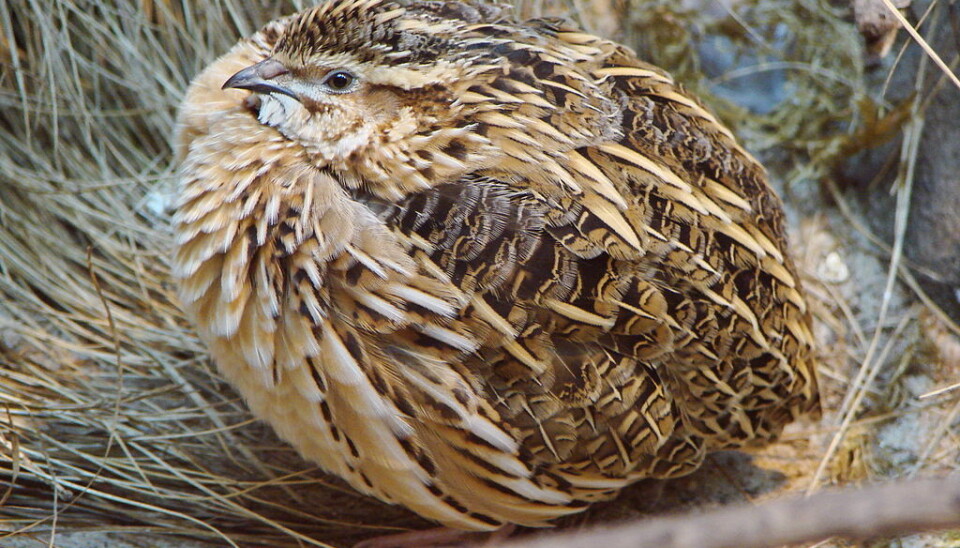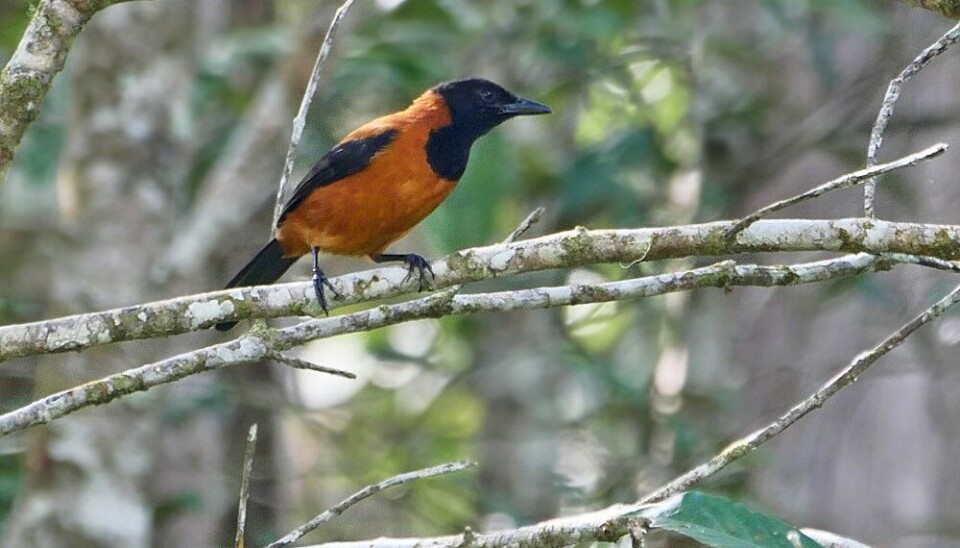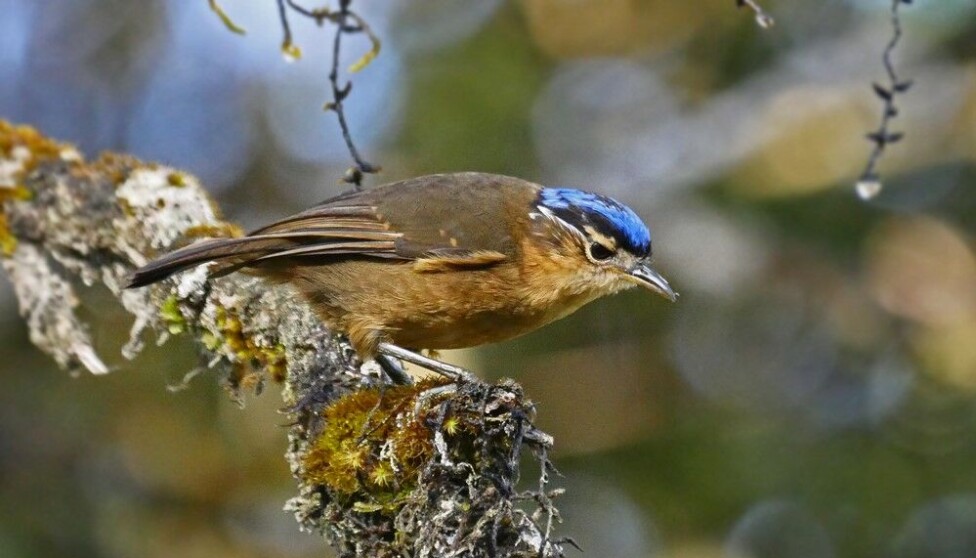Researchers' Zone:

When poison takes flight: these birds might kill you – if you eat them
Snakes, mushrooms, frogs and some plants – but not birds, right? Well actually yes: here is what we know about the poisonous chirpers.
In 1990, the American biologist Jack Dumbacher was handling a small, jay-like bird called Hooded Pitohui (Pitohui dichrous) in mist nets in Varirata National Park in Papua New Guinea, and when he licked a scratch on his finger, he immediately felt his mouth tingling and burning.
Intrigued by this, he decided to chemically analyze feather samples and found them to contain toxins.
That was the very first discovery of a bird species which used chemical defense and could be poisonous to humans and other animals – and it was by dint of sheer luck.
Since then, many more birds were revealed as poisonous- some of which had been hiding their toxic weapon in plain sight for millennia before science finally noticed.: Without further ado, here is the what, where and why of poisonous birds.
Why are some birds poisonous?
While birds normally do not feature among the animals that people associate with poison, they do have many reasons to be poisonous.
The poison not only protects them against predators but can also be used as defense against egg-eating animals since it can be transferred to both eggs and nest material.
Additionally, some birds even use substances taken from animals or plants with the purpose of self-medication. As an example, some species of woodpeckers take advantage of insects by flapping their wings on anthills and urging them to secrete formic acid, which is then used by the birds to expunge parasites.

Poisonous birds from Eurasia and North Africa
One of the most widely known and studied poisonous birds is the European quail (Coturnix coturnix) in Eurasia and North Africa.
Cases of quail poisoning have been reported since antiquity, although scientific evidence for the presence of poison in their tissue is still inconclusive to this day.
In the Old Testament, the Book of Numbers recounts that many Israelites died after the consumption of this poisonous bird during their exodus from Egypt.
In addition, human poisoning after eating European migratory quail, known as coturnism, was so common in the Roman Empire that quail consumption was prohibited during the 1st century AD.
In the last 80 years, most quail poisonings have been reported in Greece – especially from the island of Lesbos in the East Aegean Sea, which is a stopover site for quails during their migration to Eastern Europe in spring.
Most victims of quail poisoning are adults, and the first case reported in a child was as late as in September 2005.
This report describes a 12-year-old boy in Greece, who was hospitalized with intense symptoms, including sharp muscular pains, weakness, muscular fatigue, cramps, walking disability, and dark urine.
Neither clinical nor laboratory differences were found between this case and quail poisoning in adults. The boy was treated with appropriate medication and bed rest. He fortunately fully recovered eight days later.
How does migration affect coturnism?
Interestingly, quails are poisonous only during migration, and more specifically, while they are flying certain routes.
For example, quails are not poisonous when they travel from East Africa to Europe during spring, but they are poisonous when they return to Africa in autumn.
It is as if quails are going for vacation to Europe and returning home to Africa with their poison as a souvenir.
But how do they acquire the poison?
Since the Middle Ages, many have proposed that quails obtain the poison through their diet based on poisonous plants. If this is correct, it is likely that the poison is ingested by quails during migration.
Over the years, many plants - such as hemlock and henbane - have been accused of being responsible for coturnism as quails feed on them and/or their seeds. However, the exact source of quail poison remains unknown to this day.
It is worth noting that toxicity of quails cannot be determined from their taste or smell and, furthermore, the meat of the bird cannot be detoxified by cooking.
Therefore, it is important that people are properly informed about the safety concerns of quail consumption and how to avoid intoxication.
Poisonous birds from Papua New Guinea
Another group of poisonous birds that recently gained attention from the scientific community are the three species of pitohui (genus ‘Pitohui’), which were revealed to be toxic by Jack Dumbacher on that fateful expedition to Papua New Guinea in 1990.
The poison of these birds, which is contained in their feathers and muscle tissue, can cause numbness, burning, and sneezing when inhaled, and in case of ingestion two more symptoms, nausea and lip puckering, are observed.
For this reason, people from Papua New Guinea refer to the Hooded pitohui as »rubbish bird«, which should not be eaten unless skinned and cooked in a special manner.
Interestingly, it has been reported that the Blue-capped Ifrita (Ifrita kowaldi), another bird from Papua New Guinea, has the same poison in its skin and feathers, despite not being closely related to the Pitohuis.

By analyzing skin, feathers, and other tissues of Pitohui and Ifrita, scientists reported the presence of a highly toxic alkaloid (a naturally occurring organic nitrogen-containing compound) called homobatrachotoxin.
This molecule is a member of the batrachotoxins (BTXs), a family of steroidal alkaloid toxins that rank among the most toxic natural substances. More precisely, at least six different BTXs have been identified in both birds, but homobatrachotoxin seems to be the most abundant.
The highest amount of homobatrachotoxin (80% of the total amount in the bird) is found in the skin of the Pitohui, but it can also be found in the feathers (around 13%) and muscles (less than 4%).
Frog poison on wings
Until such toxins were found in Pitohui, the same type of toxins, BTXs, was originally found only in poison-dart frogs – their name itself comes from ‘bátrachos’, the Greek word for frog.
Poison dart frogs are small, brightly colored amphibians, which live in the rainforests of Central and South America.
When it comes to toxicity, their name speaks volumes: it comes from the fact that BTX was used by some native South American tribes to poison the tips of darts used for hunting for hundreds of years.
It is believed that the frogs gain their poison through their diet, which is based on poisonous ants and other small insects.
Nevertheless, the concentration of the toxin in poison dart frogs is up to three orders of magnitude higher than that in Pitohui.
Totally, over 800 alkaloids have been discovered in the skins of amphibians, which opens a window to further investigate if additional toxins of the same kind are present in birds too.
Interestingly, and similarly to quails, Pitohuis are not poisonous in all of Papua New Guinea, but only in certain areas. This again suggests that the birds obtain the toxins through their diet.
Based on this idea, BTXs were in 2004 identified in beetles that live in Papua New Guinea and were also found in the stomach of Pitohui and Ifrita.
Natives have also reported that when these beetles come in contact with the eyes, nose, or mouth, they cause symptoms like a severe burning sensation.
The source from which the beetles obtain this poison still remains a mystery, although the most reasonable explanation is the existence of another source of poison, like plants.

Food for thought…
The most important question that is still unanswered is how species so different from each other, such as poisonous birds and beetles from Papua New Guinea, and poison dart frogs from Central and South America, have developed the same defense mechanism using the same poison.
What’s more, the discovery of poisonous birds shows that such toxins might be even more widespread throughout the animal kingdom than we think.
The only way to find out is through more research efforts – perhaps starting with methods that already proved surprisingly reliable, such as a biologist licking his fingers after handling one of his study animals.
This article was originally published on our danish sistersite Videnskab.dk/Forskerzonen.S
References
'Chemistry and ecology of toxic birds', ChemBioChem (2001), DOI: 10.1002/1439-7633(20011105)2:11<809::aid-cbic809>3.0.co;2-c
'Animals , Poisonous and Venomous', In Encyclopedia of Toxicology (2014), DOI: 10.1016/B978-0-12-386454-3.00984-2
'Homobatrachotoxin in the genus Pitohui: Chemical defense in birds?', Science (1992), DOI: 10.1126/science.1439786
'Batrachotoxin alkaloids from passerine birds: A second toxic bird genus (Ifrita kowaldi) from New Guinea', Proceedings of the National Academy of Sciences of the United States of America (2000), DOI: 10.1073/pnas.200346897
'Melyrid beetles (Choresine): A putative source for the batrachotoxin alkaloids found in poison-dart frogs and toxic passerine birds', Proceedings of the National Academy of Sciences of the United States of America (2004), DOI: 10.1073/pnas.0407197101
'Poisonous birds: A timely review', Toxicon (2015), DOI: 10.1016/j.toxicon.2015.03.020
'Avian chemical defense: Toxic birds not of a feather', Proceedings of the National Academy of Sciences of the United States of America (2000), DOI: 10.1073/pnas.97.24.12948



